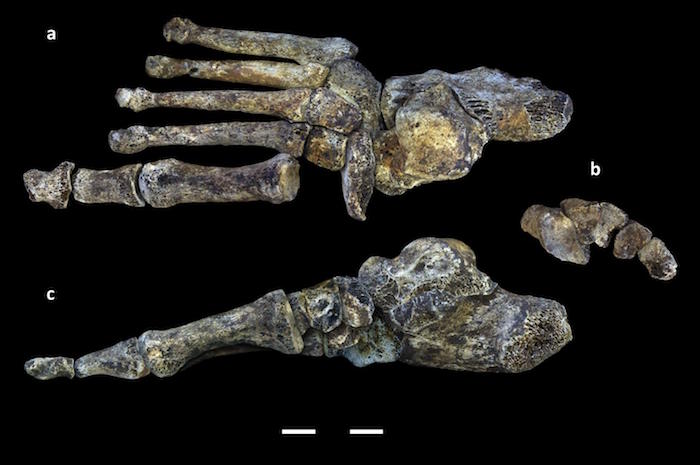Homo Naledi, the ancient human ancestors, were handy with tools
The newly discovered human ancestor Homo naledi may have been “jack of all trades” – uniquely adapted for both tree climbing and walking upright, while also being handy with tools, new research has found.
Modern humans (Homo sapiens) and extinct species including Homo neanderthalensis, Homo erectus, Homo habilis, and Homo naledi are part of the Homo genus.
According to Bernhard Zipfel, senior collections curator at the Evolutionary Studies Institute at the University of the Witwatersrand and co-author of the paper on the foot, the foot of the H. naledi is strikingly similar to a modern homo sapien’s foot.
One study assessed 107 foot fossils, including a well-preserved adult right foot, and the other look at almost 150 hand bones.
“The tool-using features of the H. naledi hand, in combination with its small brain size, has interesting implications for what cognitive requirements might be needed to make and use tools, and, depending on the age of these fossils, who might have made the stone tools that we find in South Africa”, Tracy Kivell at the University of Kent in England, lead author of one of the two H. naledi papers, said in a statement.
Based on fossils retrieved from South Africa’s Rising Star cave, two teams reconstructed the locomotor habits of Homo naledi, reported Tuesday in Nature Communications. The curved phalanges indicate that H. naledi still used their hands for climbing trees and that moving through the tree canopy may have been a secondary form of locomotion for the hominids when bipedal walking was impractical.
Although modern humans are the only human species alive today, other human species once walked the Earth.
“Homo erectus is the earliest human with body proportions similar to our own, with long legs, short arms”.
This hand reveals a long, robust thumb and [an evolved] wrist morphology that is shared with Neandertals and modern humans, and considered adaptive for intensified manual manipulation. Likewise, the foot bones are said to shown that naledi’s feet were very akin to modern human feet, but with a few differences: a lower arch and curved toes, namely.
When, in the course of human evolution, did our ancestors climb down from the trees and begin striding across the land?
“If recent, more complete hominin fossil discoveries have taught us anything, it’s that odd combinations of more derived human-like features and more primitive features… are likely the rule rather than the exception”, Kivell said.
As opposed to the straight fingers of the Neanderthals, the fossil presented fingers that were strongly curved which suggest that this species also used their hands regularly for climbing.
“The foot is not entirely humanlike, but it’s more humanlike than not”, William Harcourt-Smith, a paleoanthropologist at Lehman College in the Bronx and the American Museum of Natural History in New York, told Live Science.
“It’s a mosaic, lots of different experiments”, he continued, “and we just happen to be the only one left, for whatever reason”.








